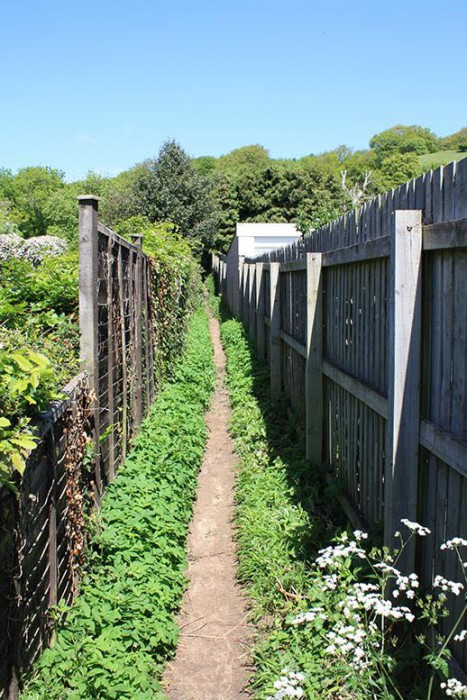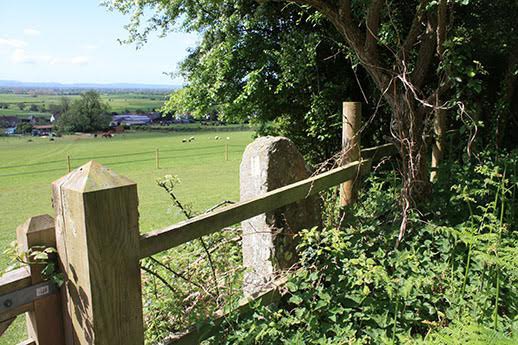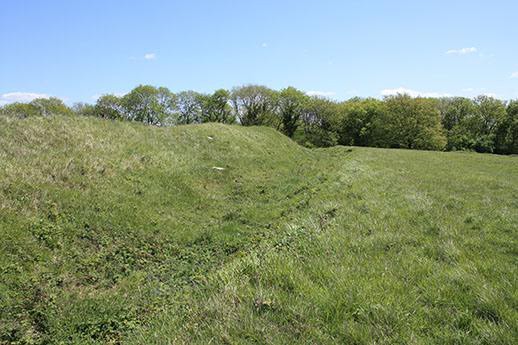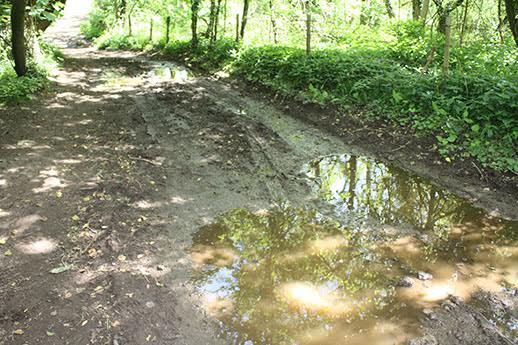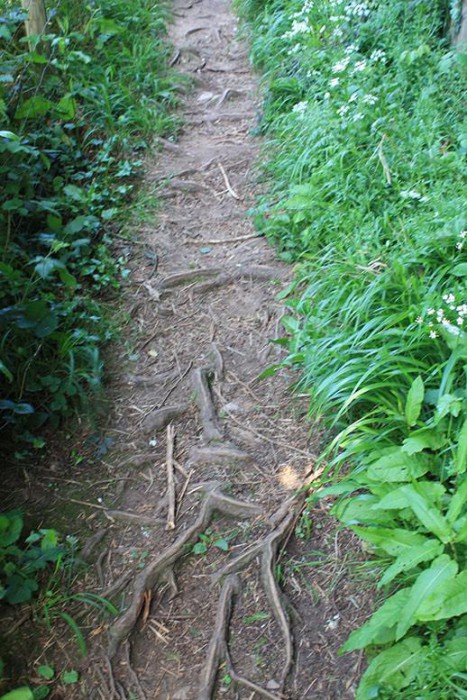Thanks very much to Matt Gilbert for letting us repost this from his blog, Richly Evocative.
We think, then as the sun shines or does not.
We think as wind skitters on a pond in a field
Or we put mantles on our words because
The same wind, rising and rising, makes a sound
Like the last muting of winter as it ends.
Wallace Stevens – from Looking across the Fields and Watching the Birds Fly
I’m back. It’s been a while. The woods behind my parents’ house on Tickenham Ridge haven’t changed hugely in the last few months – the seasons have cycled through and for now the hill is a shining riot of green in a dozen shades. White and pink blossom – Hawthorn mostly – along with yellow spatters from wildflowers in the meadow higher up, offer glimpses of alternate palettes, but provide no serious competition.
An hour earlier I was in these woods in company with my two boys, my sister, brother-in-law, two nephews and my Dad, but this time I am alone and things feel different. I wonder what I can say about this steep patch of Somerset that I hadn’t done last year when I wrote about the view and the ancient fortifications at the top. I want to say something but I’m not sure what, or how.
The sun is still warm on my face. The horses and sheep we pointed at before stand around the same North Somerset fields. My choice of paths remains the same, one steep and quicker to the top, the other easier going, as it loops through High Wood and Bayes Wood. This time I take the reverse course, starting with the sharper incline to crest the ridge first.
At the top a party of school children are being called to their teachers at the rear side of Cadbury Camp – three young stragglers walk slowly along one rutted bank of the earthwork – as I cross a carpet of grass – rich with limestone flowers according to the Avon Wildlife trust, including Autumn lady’s tresses, Autumn gentian and salad-burnet, although my untrained eye can only register a scattering of buttercups and daisies. Walking back towards the trees, I disturb a pair of rabbits and catch a flash of paws and tails as they hurtle off for cover.
As I drop back down into the woods I note the muffled roaring sound nearby; it is traffic on the M5 way down below on the Gordano side of the ridge – but could almost be a river.
Back amongst the cover of trees, it is as if a switch has been thrown, abruptly I’m listening more than looking, somehow tuned into the ridge’s sonic landscape. What seemed a quiet, sunny afternoon stroll, is now dense and thickly layered with all kinds of noise.
A dog barks somewhere on a lower slope, a smaller creature rustles in the undergrowth – a blackbird seeking lunch. There’s another on the path ahead, tail cocked and ready. A plane passes over in the blue far above, traffic on the Clevedon Road burns through, a casual murmuring of gnats or midges and the tick tick of another hidden bird. Crows caw ownership of a dappled glade. A wood pigeon explodes away from an Oak branch, with a fat paff sound – nervous and outraged at my approach.
All the while the wind is alive, teasing and pushing and blustering through and around the leaf branches, shrubs and grass. There’s no one note to this – a range of speeds and forces create a variety of noises as individual trunks and roots and layers of foliage are alternately teased and caressed and buffeted and smacked.
I wonder if the English language, or any language, has a lexicon of words for the diverse sounds or effects produced by the impact of wind on different surfaces, shapes and objects. Like most cultures we have names for specific types of wind – Sue Clifford and Angela King list several in England in Particular; including sea breezes, gusts, Helm Winds, Plague Winds, Whittle, Waddy and Rogers for example. These terms are all about strength or location though, rather than the aural impressions these gusts and blasts produce.
Many poems about the wind seem to focus on its invisible power, as seemingly unseen hands toss the world and its contents about at will, changing things or teasing at the edges, rather than dwelling overmuch on the noises it can make. I suppose that if we did have an extensive collection of sonic wind words, they’d be inclined towards onomatopoeia, and consist of different ‘yoooos’ and ‘ohhhhs’, ‘pfffffffs’ and ‘whumps’ and ‘fizzes’. Perhaps somewhere in a well stocked weather library is a grand dictionary filled with shrieks and wails, howlings and yowlings, puffs and eddys.
Without recourse to such a volume, I can only walk on and listen, enjoying the time spent teasing out the rich layers of sound available here to those with an ear and an idle hour to seek them out.
Avon Wildlife Trust – Tickenham Hill
Sue Clifford & Angela King, England in Particular, Hodder & Stoughton, 2006
Matt Sewell, Our Garden Birds: A bird for every week of the year, Ebury Press, 2012
Wallace Stevens, Collected Poems, Faber & Faber, 1984
